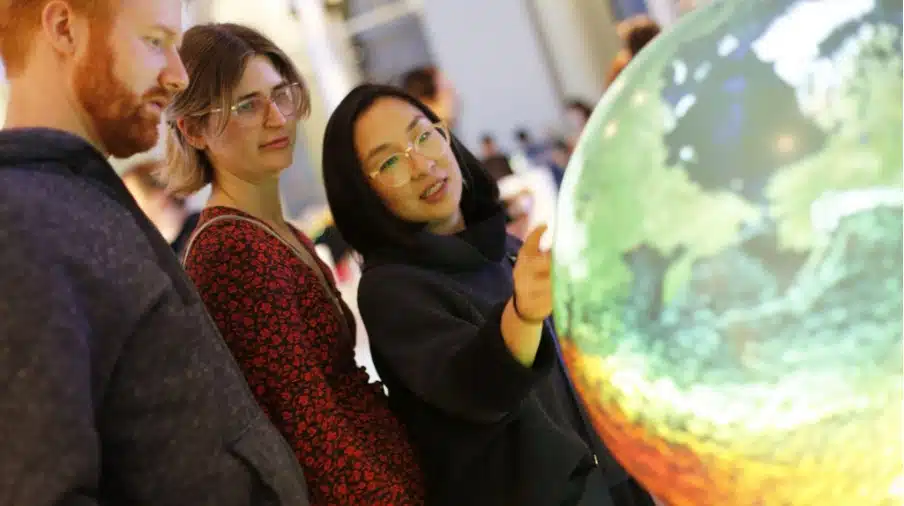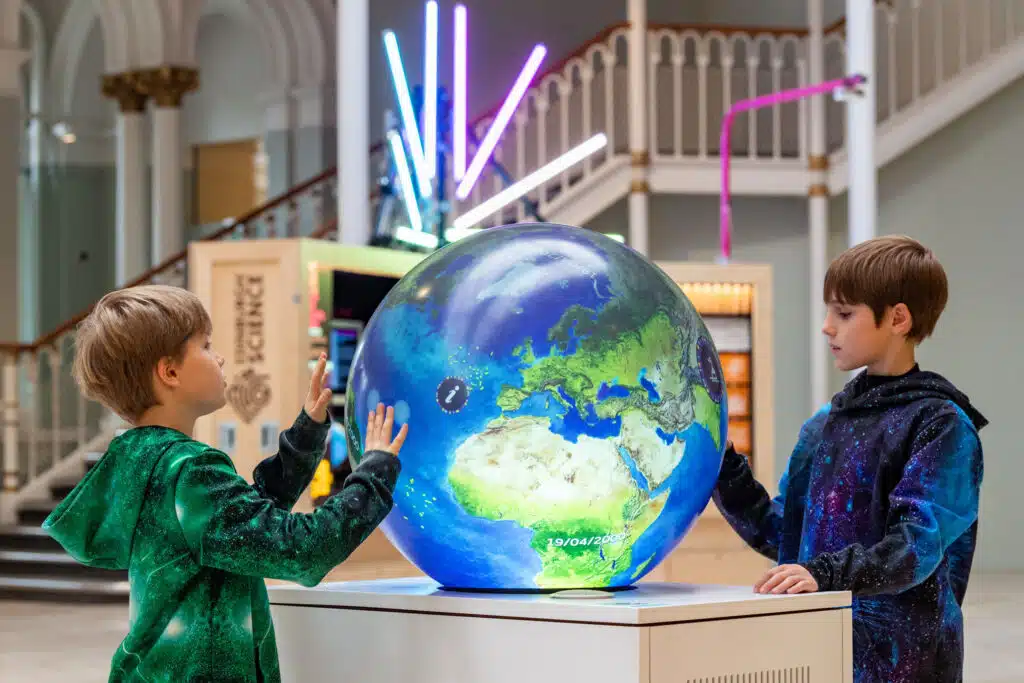Get Hands on with Spherical Displays for More Powerful Learning – Visitor
Get Hands on with Spherical Displays for More Powerful Learning
From Business Development Manager for Visitor Attractions, Shannon Owens

When it comes to engaging visitors and ensuring they retain a deep understanding of your exhibition or display, there is only so far traditional solutions can take us. Incorporating interactive technology into a visitor attraction could be the answer, but investments need a strong justification to show how the activity aligns with, and enhances, the overall visitor experience. This deep dive into the positive impact of interactive experiences will provide the justification you need.
Experienced professionals in the sector will understand the power of interactivity and the benefits it can bring to visitor attractions, such as museums and galleries. A hands-on approach supports absorption and retention of information enormously when compared with more passive learning techniques, and this is one area in which technology has the potential to open the doors to a whole new world of engaging and memorable visitor experiences.
This method of ‘learning by doing’ was pioneered by American philosopher and psychologist John Dewey, who developed a theory of experiential learning, emphasising the importance of active engagement and real-life experiences in the learning process. This really shook up the educational establishment because it challenged the traditional approach of learning through lectures and memorisation, instead encouraging active engagement with the material and opportunities to experience it in a real-life context.

Dewey’s theories are still highly influential in education and are directly applicable to other institutions of knowledge and learning, such as museums and visitor attractions. When applied to the use of touch-enabled spherical displays, experiential learning can revolutionise the visitor experience.
Research confirms that hands-on learning is the most efficient method for retaining knowledge and applying it to the real world. In a study by a team from US universities, four teaching techniques — lecture, demonstrations, discussions, and in-class activities — were measured for effectiveness. The results indicated that passive learning methods like lectures were the least effective, while in-class activities were the most effective for utilising new facts to apply them to the real world. The outcome is highly relevant to the visitor attractions space, and, by leveraging the findings, visitor attractions can create experiences that leave a deep and lasting impression.
Touch-enabled spherical displays – with their intuitive presentation of data in three dimensional space, and the ability for users to get hands-on and interact with this content – align perfectly with the principles of experiential learning. These displays offer an interactive experience that brings subjects to life, making it more likely for visitors to remember key information from the exhibition. From exploring virtual models of artefacts, and zooming in to examine the intricate details, to visualising historical events through dynamic simulations; interactive applications on touch-enabled spherical displays make learning and exploring information a captivating and memorable experience.
The ability of touch-enabled spherical displays to incorporate experiential learning tasks extends well beyond the visual exploration of three dimensional data. Quizzes and interactive exercises can be integrated seamlessly into the display, enabling learners to get actively involved and reinforce their understanding. Immediate feedback mechanisms empower visitor attractions to tailor their messaging, refine their offerings, and create more personalised customer experiences.

With their 360-degree visibility, spherical screens have also been very successful in facilitating collaborative learning environments that are the setting for many hands-on learning opportunities. This is supported by the high degree of social balance afforded by spherical displays, the positive impacts of which were confirmed by a field study conducted by a team from the University of Florida. By fostering group discussions, cooperative learning, and collective problem-solving activities, touch-enabled spherical displays encourage meaningful interactions and empower visitors to face active learning challenges together.
The immersive nature of touch-enabled spherical displays also enhances the overall learning experience and encourages a hands-on, tactile approach. When learners are fully immersed in an interactive environment, multiple senses are stimulated, activating various areas of the brain to facilitate deeper understanding. Audiences are then more likely to absorb information, make connections and remember key information from the exhibit.
As leaders in spherical display technology, we at Pufferfish understand the power of touch-enabled spherical displays to create immersive and engaging learning experiences that maximise the benefit of ‘learning by doing’. By providing an intuitive and immersive platform for active engagement, touch-enabled spherical displays enable visitors to explore, interact, and collaborate in ways that were not previously possible. Professionals in the visitor attractions sector can embrace John Dewey’s theory of experiential learning along with the potential of spherical displays, to supercharge the learning process for visitors to their attraction, and create immersive experiences that stay long in the memory.